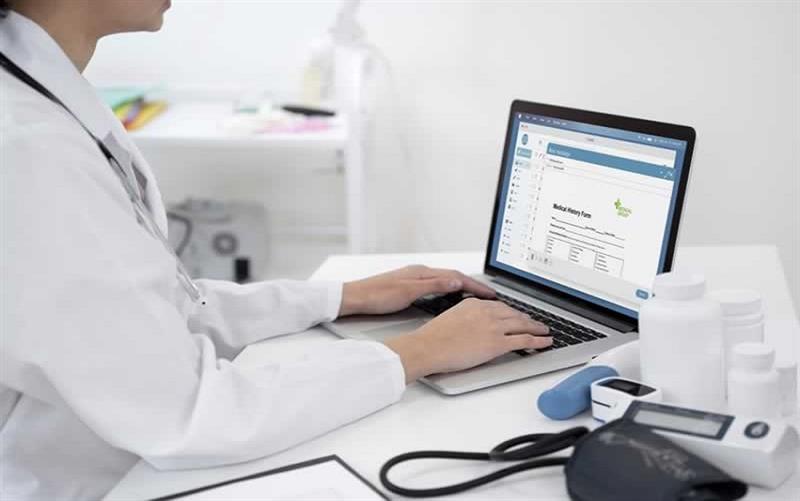
Selecting the right medical billing software involves careful consideration of these factors to ensure it aligns with your practice's operational needs, enhances efficiency, and supports financial stability. By investing time in research and evaluation, you can make an informed decision that benefits both your practice and your patients.
In today's digital age, medical billing software plays a crucial role in the efficient operation of healthcare practices. Selecting the right software can significantly streamline billing processes, enhance accuracy, and improve overall practice management. Here are essential factors to consider when choosing medical billing software for your practice:
1. Compatibility and Integration
Choosing medical billing software that integrates seamlessly with your existing electronic health record (EHR) system is crucial for maximizing efficiency and accuracy. Integration ensures that patient demographics, diagnosis codes, and treatment information flow smoothly between systems, minimizing errors and reducing the need for duplicate data entry. This integration also supports a more streamlined workflow for healthcare providers and administrative staff.
Check whether the billing software offers APIs (Application Programming Interfaces) or specific integration capabilities with popular EHR systems such as Epic, Cerner, or Allscripts. This compatibility can save time and resources by avoiding the manual transfer of information and ensuring data consistency across platforms.
2. Billing Features
Effective medical billing software should encompass a range of features tailored to meet your practice's billing needs. Key features to look for include:
Electronic and Paper Claims: Ensure the software supports electronic claims submission to insurance companies, as well as the ability to generate and print paper claims when necessary. This flexibility accommodates different payer requirements and reduces claim processing time.
Automated Coding Suggestions: Look for software that offers built-in coding databases and automatic coding suggestions based on the latest healthcare coding standards (e.g., ICD-10, CPT). This feature helps ensure accurate code selection, reduces coding errors, and minimizes claim denials.
3. Coding Assistance and Compliance
Accurate medical coding is critical for reimbursement and compliance with healthcare regulations such as HIPAA (Health Insurance Portability and Accountability Act). Look for billing software that includes:
Comprehensive Coding Databases: Access to up-to-date coding databases (e.g., ICD-10, CPT, HCPCS) within the software simplifies code selection and ensures compliance with coding guidelines.
Automatic Updates: Regular updates to coding databases and regulatory changes help your practice stay current with coding requirements. Automated updates reduce manual effort and ensure compliance with evolving healthcare standards.
4. Revenue Cycle Management
Efficient revenue cycle management is essential for optimizing financial performance and cash flow within your practice. Look for billing software that supports:
Patient Eligibility Verification: Integration with eligibility verification services allows your staff to confirm patients' insurance coverage and benefits before services are rendered. This reduces claim rejections due to eligibility issues and improves upfront collections.
Payment Processing: Software that supports electronic payment processing and patient billing statements streamlines payment collection and reconciliation. Automated payment posting reduces manual data entry and accelerates revenue recognition.
5. User Interface and Ease of Use
User-friendly software enhances staff productivity and reduces training time. Look for features such as:
Customizable Dashboards: Personalized dashboards allow users to configure views based on their roles and responsibilities. This customization improves usability and access to relevant information for different staff members.
Intuitive Navigation: Clear navigation menus and logical workflows make it easier for users to navigate the software and perform tasks efficiently. Intuitive design minimizes errors and frustration among users.
6. Support and Training
Choosing a software vendor that offers robust support and training resources is essential for successful implementation and ongoing use. Consider:
Training Programs: Vendor-provided training sessions, user guides, and online resources help your staff learn how to use the software effectively. Comprehensive training reduces implementation challenges and ensures staff proficiency.
Technical Support: Responsive technical support services are critical for addressing software issues and resolving technical challenges promptly. Look for vendors that offer multiple support channels (e.g., phone, email, live chat) and have a reputation for excellent customer service.
7. Security and Compliance
Data security is paramount in healthcare to protect patient information and comply with regulatory requirements. Ensure that the billing software:
Data Encryption: Utilizes strong encryption protocols to secure data both at rest and in transit. Encryption safeguards patient information from unauthorized access or breaches.
Access Controls: Implements role-based access controls (RBAC) to restrict access to sensitive data based on user roles and responsibilities. This prevents unauthorized users from viewing or modifying protected health information (PHI).
8. Cost and Scalability
Evaluate the total cost of ownership (TCO) of the billing software, including initial setup fees, subscription costs, and any additional charges for upgrades or support services. Consider:
Scalability: The software should accommodate your practice's growth by supporting additional providers, expanding services, or integrating with new systems without significant disruptions or increased costs.
Subscription Models: Compare pricing models (e.g., per provider, per claim, flat fee) to determine which aligns best with your practice's budget and financial goals. Transparent pricing and flexibility in payment structures contribute to financial predictability.
9. User Reviews and Recommendations
Gather insights from other healthcare professionals or practices similar to yours by reading user reviews and seeking recommendations. Peer feedback provides valuable perspectives on the software's performance, reliability, and vendor support. Consider factors such as user satisfaction, implementation experiences, and ongoing customer service when evaluating reviews.
10. Vendor Reputation and Longevity
Choose a reputable software vendor with a proven track record in the healthcare industry. Consider factors such as:
Experience: The vendor's experience in developing and supporting medical billing software demonstrates their understanding of healthcare industry needs and challenges.
Financial Stability: A financially stable vendor is more likely to invest in product development, support services, and compliance with industry regulations over the long term.